International
Cuba tries to recover two days after the impact of Hurricane Rafael

Brigades of linemen (electrician technicians) fixing laying and fallen poles on the ground, people cleaning the streets and some private businesses operating with generators illustrate this Friday Cuba’s attempts to recover, after two days of the impact of Hurricane Rafael.
There are still roads cut, streets crossed by fallen trees, debris and garbage accumulating, traffic lights turned off and many people on the streets collecting part of the damage caused by the cyclone that hit the west of the country with winds of up to 186 kilometers per hour and rains of up to 195 millimeters (or liters per square meter).
Many areas in the west of the country – including the capital – continue without electricity since Wednesday, despite the fact that the National Electric System (SEN) managed to unify again on Friday morning after almost 48 hours of fracturing in subsystems after the second total blackout in three weeks.
Cuba is recovering electricity after the passage of Hurricane Rafael
The SEN synchronization means that the whole country is already interconnected in a single network, but not all Cubans have electricity because in many places the poles, cables and transformers affected by the cyclone have not yet been repaired.
In Havana, with at least 495 fallen electric poles, only 17% of its almost two million inhabitants currently have electricity, according to official data.
In addition, great effects persist in the provinces of Mayabeque, Artemisa and Pinar del Río. These last two provinces are totally disconnected from the SEN.
In the rest of the country, blackouts are also occurring, but due to the SEN’s inability to produce enough electricity to meet demand, a chronic and growing problem in Cuba due to the frequent breakdowns of old power plants and the fuel deficit, the result of the lack of foreign currency to import it.
Resumption of classes and public transport
Rafael is the second hurricane to make landfall in Cuba in 2024. The previous one was Oscar, who hit the northeastern end of the island for 24 hours between October 20 and 21, leaving eight dead, 12,000 damaged homes and 13,000 hectares of crops affected.
The authorities do not report missing or deceased for the moment due to Rafael, who have recognized “strong damage” in homes, infrastructure and crops of Artemisa, Mayabeque and Havana, although without providing specific figures for the moment.
They also reported that the 250,000 evacuated throughout the country by Rafael, most of them in Havana, are returning to their homes as conditions improve.
As part of the recovery, the Minister of Education, Naima Trujillo, assured that next Monday the school year will resume “in most institutions”, after its suspension prior to Rafael’s impact. In the west there are many schools with affected.
In Havana, the local transport company reported on the “gradual restoration” of service in the main arteries, but said that the maritime transport of passengers through the capital’s bay remains suspended.
Damage to housing and agriculture
Rafael made landfall in Cuba as a hurricane of great intensity on Wednesday afternoon and crossed the island from south to north for more than two hours.
In Artemisa, where Rafael made landfall on Wednesday afternoon as a category three hurricane, the houses affected total 2,825, according to the official newspaper Granma, which presented a meeting of the National Defense Council headed by Cuban President Miguel Díaz-Canel.
Artesa authorities detailed that there is damage to 15,000 hectares of banana, cassava, bean and rice crops; and 40 schools suffered damage. In Mayabeque they counted 441 homes with “significant damage” and reported damage to agriculture as in Artemisa. In Havana they reported more than 461 collapses between total and partial.
The most critical situation in the Cuban capital, in addition to the 461 total and partial collapses, is concentrated in the fallen trees, which have torn off electrical and telephone cables, reported the local governor, Yanet Hernández.
International
Government paves the way for ‘Gordo Dan’, from the “armed arm of Milei”, to be a candidate
The head of staff of the Argentine government, Guillermo Francos, said this Friday that the far-right influencer Daniel Parisini, known as ‘Gordo Dan’ on social networks and visible face of the so-called ‘armed arm of Milei’, would be a “good candidate” for the 2025 legislative elections.
Francos’ statements to the Urbana Play radio station come in the midst of controversy over the presentation, last weekend, of the group ‘Fuerzas del Cielo’ by followers of the Argentine president, including Parasini, who described the movement as “the armed arm of Milei.”
“He’s a good candidate. He is a professional, a doctor, he has clarity, positioning him in more extreme positions makes no sense. She is a normal, balanced person, questioning the status quo, who wants Argentina to change, like many people,” Francos said.
‘Forces of Heaven’
Regarding the presentation of the ‘Forces of Heaven’, he indicated that “the impact on that act of a group of militants who decided to work together has been exaggerated” and added: “Who talked about weapons? He referred to the weapons of democracy, the use of the word through the cell phone and Twitter.”
“Today much more sophisticated mechanisms are used, networks are important for the dissemination of political ideas, but from there to interpret that this is a crisis armed with firearms,” he added.
The words of Javier Milei’s chief of staff, more than reassuring, have been interpreted as a way to pave the way for ‘Gordo Dan’ to be a candidate in 2025, according to the country’s media.
Gordo Dan repeats Javier Milei’s slogans
At the presentation of ‘Fuerzas del Cielo’, in the town of Buenos Aires de San Miguel, the speakers presented a fascist scenography, with banners with the legend “Argentina will be the lighthouse that illuminates the world” and allusions to the homeland, private property, freedom and family.
The main speaker was ‘Gordo Dan’, who attacked progressivism and repeated Milei’s slogans.
The newspaper Perfil publishes that Santiago Caputo, Milei’s advisor and strategist of the campaign that led him to victory a year ago, is the “shadowy leader” and Parasini, the visible face and “maximum reference” of the movement.
A group that, apparently, has the approval of Karina, the president’s sister and general secretary of the Presidency.
Neither Caputo nor Karina were at last Saturday’s event, but the far-right ideologue Agustín Laje, a personal friend of the president, was.
Who is Gordo Dan?
Daniel Parisini is a 32-year-old doctor who does not practice, originally from the province of Santiago del Estero (northern Argentina) and a militant since its beginnings of La Libertad Avanza (LLA), the far-right party created by Javier and Karina Milei.
Since Milei is president, the content creator walks around the Casa Rosada, attends official events and even advances dismissals of officials, despite not having a position in the Government.
He is the unofficial spokesperson to move the networks, a ‘troll’ that points to opponents. In his streaming program ‘La Misa’ he makes propaganda to the ‘libertarian’ universe, as he himself describes it, with all kinds of attacks on kirchenism, those who question the ideas of the LLA and feminism.
According to Perfil, Parasini is a partner of Carajo S.A., the company that has created the Carajo channel, from where La Misa is transmitted.
According to the company Rating Streaming, ‘Gordo Dan’ is the most influential in X and makes a big difference to the next most powerful of the networks in Argentina. It has 269,000 followers.
Last August, the Association of Argentine Television and Radio Journalists (APTRA) presented him with the Martín Fierro Digital 2024 award, in the category “the most influential in X”, and in his speech he thanked Alberto Fernández for “destroying Kirchnerism.”
International
The Venezuelan Prosecutor’s Office investigates María Corina Machado for supporting a law approved in the US House of Law

The Venezuelan Prosecutor’s Office announced this Friday the opening of an investigation against the leader of anti-Chavismo María Corina Machado for – she assured – supporting the bill approved in the United States House of Representatives that prohibits US government institutions from hiring people or companies that have commercial ties with the Chavista Executive.
Through a statement published on Instagram, the Public Ministry (MP, Prosecutor’s Office) maintained that it decided to start this investigation against Machado to “be charged with his promotion and support for said legal defense that terrible sponsors criminal acts against the Venezuelan people.”
The crime for which the Prosecutor’s Office is investigating Machado is “treason to the homeland”
The institution maintained that the pronouncements made by Machado in favor of this bill constitute the commission of the crimes of “treason to the homeland”, conspiracy with foreign countries, as well as criminal association.
On Wednesday, Machado foresaw consequences for the government of Nicolás Maduro for this bill.
“The Bolivar law (officially Law of Prohibition of Operations and Leases with the Illegitimate Authoritarian Regime of Venezuela) sends a clear message to the regime: repression and criminal activities have consequences and no one will be able to normalize them,” Machado said through X, although the rule must be approved by the Senate for it to become effective.
Meanwhile, President Nicolás Maduro described the rule as “garbage,” while warning that those opponents who support this bill will be committing crimes, so they will have to comply with “the judicial consequences”, without specifying what they would be.
Perpetual disqualification
On Thursday, the Parliament – controlled by Chavismo – approved the discussion of an organic law that seeks to politically disqualify those who request countries, “terrorist groups or associations,” to impose economic sanctions against the Caribbean nation.
The bill was unanimously approved in the plenary, in which the president of the Chamber, the Chavista Jorge Rodríguez, insisted that the political disqualification must be perpetual.
The Bolivar bill was presented by Florida representatives Mike Waltz, Republican, and Debbie Wasserman Schultz, Democrat, who consider, in the words of the first, that the United States must “maintain the existing sanctions against the regime and seek to expand them to minimize Maduro’s resources to abuse the freedoms and prosperity of the Venezuelan people.”
International
Trump appoints new members to his government cabinet

The president-elect of the United States, Donald Trump, announced four new nominations for his government cabinet, some of which will have to be ratified by the US Senate starting January 20, 2025.
The most controversial of them is that of Russell Thurlow Vought, one of the “architectures” of the ultra-conservative government program Project 2025, to be at the head of the Office of Management and Budget of his future Administration.
Vought, 48, was already in charge of that same portfolio during part of Trump’s first term (2017-2021).
“He did an excellent job: we removed four regulations for each new regulation, and it was a great success!” he said in a statement from his transition team.
A “cost reducer” in the cabinet
Trump recalled that Vought has spent many years working on public policies in Washington and is an “aggressive cost reducer and deregulator” who will help his government cabinet implement his “United States first” agenda in all agencies.
“He knows exactly how to dismantle the deep State (…) and will help us return self-government to the people,” added the future president about his chosen one.
An ex-NFL to Urban Planning and Housing
He also nominated in the Urban Planning and Housing portfolio of his future Administration the former American football player Scott Turner, who spent nine seasons in the National League of American Football (NFL) with the Washington Redskins, the San Diego Chargers and the Denver Broncos.
During Trump’s first term (2017-2021) Turner served as the first executive director of the White House’s revitalization and opportunity office, dedicated to the most needy communities.
According to the statement of the transition team, these areas received thanks to their work about 50 billion dollars (about 48 billion euros) in private investment.
Trump also pointed out that Turner, originally from Texas, is a pastor at the Prestonwood Baptist Church.
“He will work with me to make the United States great again for EVERY American,” said the New York tycoon, who also congratulated the appointment of the woman and the son of his chosen one.
The Work portfolio at the hands of a Latina
On the other hand, the congresswoman of Latin origin Lori Chavez-DeRemer will be his next Secretary of Labor.
“He has worked tirelessly with the business and labor sector to develop the workforce of the United States and support working men and women,” said the former president, who won the elections on November 5 against Democrat Kamala Harris.
As the congresswoman explained so far, her grandmother’s family emigrated to the United States from Mexico so that her children could live a better life and achieve their American dream.
“I am proud of my Latin roots and the achievements achieved by the Hispanic community in our great country,” she said in a Facebook post.
Chavez-DeRemer began her career in public service in 2002 at the Parks Committee of the city of Happy Valley, Oregon, and later won a position on the City Council, of which she was later president.
She was elected mayor in 2010, becoming the first Latino mayor of the municipality, and re-elected in 2014.
In 2022 she was elected to the US House of Representatives to represent the fifth district of the Oregon Congress.
A billionaire to take care of the Treasury
For the cabinet’s Treasury portfolio, Trump trusted billionaire Scott Bessent, investor and fund manager.
Bessent is the founder of the macro-investment firm Key Square Group, in the last election campaign he hosted a fundraising event for the Republican in South Carolina and Trump has described him in the past as one of the brightest minds on Wall Street.
In the event that his nomination is confirmed and validated by the Senate, Bessent awaits Bessen a crucial role in overseeing a broad portfolio that will cover international trade, taxes, financial regulation and US sanctions.
The Washington Post newspaper pointed out that people close to Trump’s transition team point out that the financier caught his attention in part because of his negative predictions about the impact of a possible Democratic victory in the elections of last November 5.
Bessent, who studied at Yale, was manager of George Soros’ fortune, but left the investor and philanthropist’s firm to set up his own fund.
-
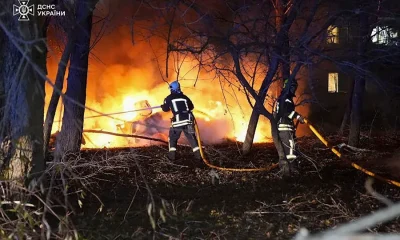
 International5 days ago
International5 days agoMore than 20 dead and a hundred injured in several missile attacks against residential areas of Odessa and Sumi
-
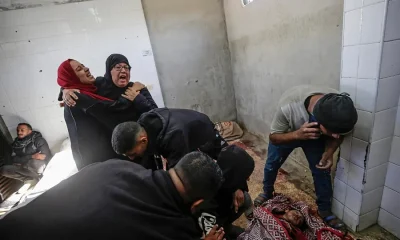
 International5 days ago
International5 days agoThe number of deaths rises to 111 in Gaza in one of the most violent days of the month
-

 International4 days ago
International4 days agoEtruscan artifacts targeted in black market scheme uncovered in Umbria
-
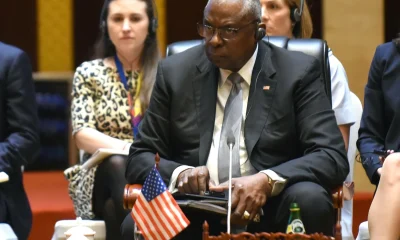
 International3 days ago
International3 days agoThe US claims that China has rejected a meeting between its Defense chiefs in Laos
-

 Tecnología4 days ago
Tecnología4 days agoAI chip industry shifts focus as Nvidia faces new competition
-
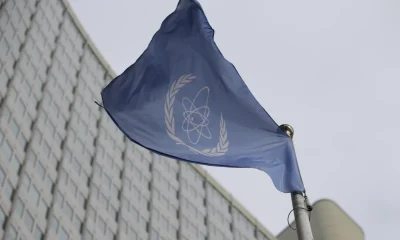
 International4 days ago
International4 days agoIran expands uranium stockpile to near weapons-grade levels
-

 International5 days ago
International5 days agoThe Kremlin accuses the United States of throwing “firewood” by authorizing Ukraine to use long-range missiles
-

 International5 days ago
International5 days agoThe presidential candidates in Uruguay promised in a debate not to raise taxes
-
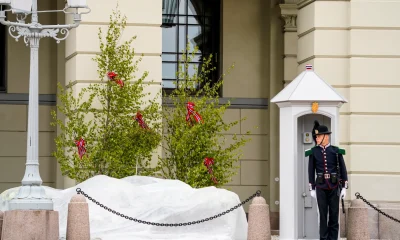
 International3 days ago
International3 days agoOne-week preventive detention for Princess Mette-Marit’s son of Norway for rape
-

 International3 days ago
International3 days agoThe next attorney general Matt Gaetz manages to stop the report on his sex scandal
-
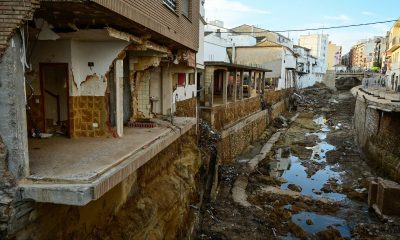
 International2 days ago
International2 days agoIMF: Spain’s economy remains resilient despite devastating floods
-
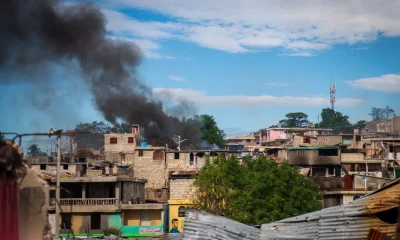
 International3 days ago
International3 days ago85% of Haiti’s capital has fallen into the power of gangs, according to UN reports
-

 International2 days ago
International2 days agoPutin warns of escalation, suggests strikes on western weapon suppliers
-

 International2 days ago
International2 days agoZelenski urges global action after russian ballistic missile strike
-

 International2 days ago
International2 days agoElon Musk plans sweeping cuts to U.S. bureaucracy and spending
-
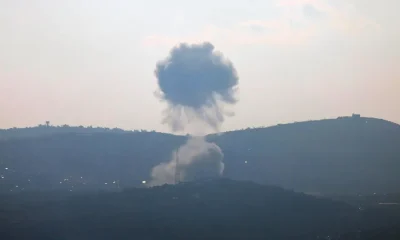
 International2 days ago
International2 days agoLebanon reports deadly airstrikes: 40 killed in Bekaa, 12 in southern regions
-

 International20 hours ago
International20 hours agoTrump appoints new members to his government cabinet
-

 International20 hours ago
International20 hours agoTrump chooses the members of his government in charge of health and epidemics in the US
-

 International2 days ago
International2 days agoTrump appoints Pam Bondi as future U.S. attorney general
-

 International2 days ago
International2 days agoMatt Gaetz withdraws from attorney general nomination amid political tensions
-

 International20 hours ago
International20 hours agoThe Venezuelan Prosecutor’s Office investigates María Corina Machado for supporting a law approved in the US House of Law
-
International20 hours ago
Government paves the way for ‘Gordo Dan’, from the “armed arm of Milei”, to be a candidate




















